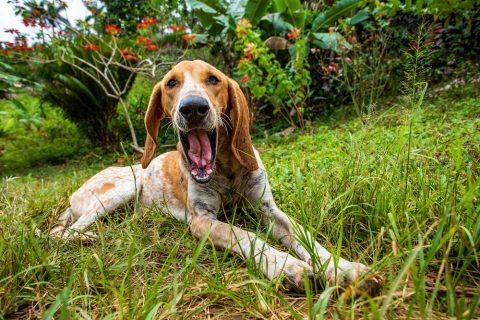
An autumn day hike in the mountains seems like a good idea until you get separated from the others. Now you’re lost in the wilds, and you don’t know for how long. What is the most critical thing you need first: food, water, or shelter?
If might surprise some of you who answered “water” that you can survive for about three days without water, even longer without food, but you might not make it through the night in high country. Did you know that you can develop hypothermia in temperatures as high as 50 degrees Fahrenheit, especially when combined with moisture and wind? In fact, hypothermia is the number one outdoor killer in the United States. For that reason, shelter is your most important priority, and early settlers to North America knew this. They knew that to survive in the raw wilderness, they needed three things: Food, fur, and fat.
So where is the shelter in those three words? Read on.
Food, of course, was crucial in providing energy and nutrients needed to survive. Fat was a concentrated source of calories and energy, and it could serve as a base for medicinal salves, but perhaps most importantly, it served as a lubricant for waterproofing fur they used to craft shelter materials, as well as warm coats and blankets.
Frontiersmen and women didn’t have Walmart, but they did have one source for all three materials: Trees! Certainly, fruits, nuts, bark, sap and leaves provided some material, but there was one other element living amongst these people that could provide all three things: Raccoons!
Tree hollows are one of a raccoon’s favorite denning site, but if resting, hunting, or threatened, a raccoon can scurry up a tree trunk in the blink of an eye. And therein was the challenge for settlers. How to get at a raccoon perched high up in tree?
“There’s an app for that!” said no pioneer ever. But there was a dog for that, and it was the English Fox and Coonhound, aka the Virginia Hound, aka the American English Coonhound, the name by which we know it today. These hounds were bred by frontiersmen for a very specific purpose: Trailing and “treeing” raccoons. And they were good at it.
Selectively bred from English Foxhounds brought to America by settlers in the 17th and 18th centuries, even Virginia Coonhounds lost the smell signature when the game they were pursuing climbed trees. To overcome the scent loss, Virginia Coonhounds were crossed with Bloodhounds. The result was a dog with a strong scenting ability that made them particularly effective at following raccoon trails, but it was a dog’s ability to pursue prey up trees that was especially sought when breeding more of these dogs.
These dogs had (and still do) remarkable stamina and speed, and their ability to pursue raccoons for long periods was valued because raccoon hunting often stretched into the night given that raccoons are primarily nocturnal.
But there’s more to this breed than endurance and scenting prowess.
Muscular and athletic, the dogs have bodies that are strong and racy, attributes needed to power a dog up a tree. They have exceptional balance, and superb agility enable the dog to maneuver on tree branches. Need proof?
Watch (and note: the raccoon is unharmed but probably would rather have been anywhere else):
Need more? This dog makes it further up!
As an added bonus, AECs have a loud, distinctive howl that helped hunters locate both them and the treed raccoons in the dark of night. In a dense forest. In the winter. While wearing galoshes. Just checking to see if you’re still reading.
Image of American English Coonhound by Adrian Lamela Aragonés/Wirestock Creators
